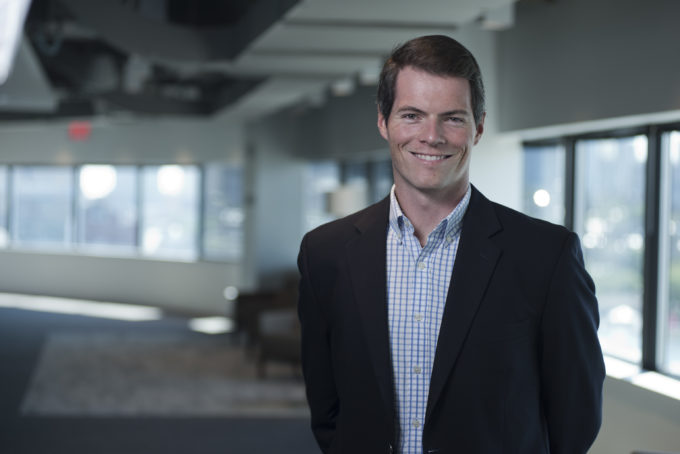A Q&A with CEO and Co-founder Jon Garrity
Tagup has been an active part of the Greentown Labs community for years. The predictive asset management company participated in the incubator’s first Greentown Launch accelerator, PROPEL, in 2015, which led to a pilot project and purchase order for two of the participating startups—including Tagup. CEO and Co-founder Jon Garrity has served as the Greentown Labs community board member for the past two years, representing the needs of members on the Board of Directors.
Tell us a bit about yourself and how you founded Tagup.
I previously worked at General Electric in their energy business, and I started the company with a classmate from MIT, Will Vega-Brown, who went on to do his PhD in artificial intelligence.
We saw that GE and other large industrial manufacturers would remotely monitor some of the highest value equipment, like gas turbines or jet engines, and then provide analytical services to improve uptime and availability. We realized, with new technology, that capability could be economical for any equipment type. With the growth of cloud computing coupled with new methods in machine learning, we could make that technology capability accessible.
We started with electric grid assets, transformers in particular, and we’ve expanded from there. That was way back in mid-2015. We basically incorporated and came straight to Greentown—we were part of the PROPEL program and have been here since.
What do you want people to know about Tagup?
That we are a machine learning company that uses new innovations in analytics and computing to make our critical infrastructure more reliable, safe, and sustainable.
When you say “critical infrastructure,” can you explain what you’re referring to?
Primarily the grid and power generation assets. Transformers, switchgear, conductors, among many other examples.
What’s the environmental impact of this technology?
A few different things. For generating assets like wind turbines it’s very explicit—we make them more reliable. By increasing availability, you make wind more competitive as a source of power. For transformers, part of it is making infrastructure and the grid more reliable and resilient. Transformers are often oil-filled, they can fail catastrophically, and so avoiding the environmental considerations of equipment failure is important too.
Are these assets monitored now?
Most of the critical ones are monitored to some extent. There are very limited methods available today that are deployed to understand when something will fail—just that there’s something wrong. Our analytics can quantify time to failure and probability of failure in a given period of time, allowing for better decision making around equipment maintenance, procurement, and operation.
Can you boil down how you do that?
We take all that sensor data—and often, though not always required, historical examples of equipment failure—and we train machine learning models using distributed computing infrastructure. We have thousands of computers that are running all these calculations, and then we collect the results and make them available via our web application. So I can pull it up on my iPhone, and you could see the real-time probability of failure for any of thousands of assets around North America and Europe.
What stage is the company?
We’re a seed-stage company, we raised a $2.1 million pre-seed round in mid-2017. We’re raising another round now. We’re 15 people in total, and we now have almost 50,000 transformers in our analytics, among other equipment types.
You’ve been the community board member at Greentown for the last couple of years. I’d love to hear about that experience.
It’s been wonderful. Where the experience has been most fulfilling has been engaging with the community in the capacity of the community board member—getting feedback from all the startups here, learning about the challenges faced by our community, and making sure that members’ issues are communicated to the board. That includes tactical things like power in the lab or internet service or call room availability, but also more strategic considerations, like the value of the community, investor resources, and making sure that Greentown remains a highly competitive, best-in-class community and space for cleantech startups.
To learn more, visit Tagup’s website.
Greentown Labs is a community of bold, passionate entrepreneurs creating solutions for today’s biggest climate and environmental challenges. Located in Somerville, Mass., the Greentown Labs Global Center for Cleantech Innovation is the largest cleantech incubator in North America, operating a 100,000 sq. ft. campus comprised of prototyping and wet lab space, shared office space, a machine shop, electronics lab, and a curated suite of programs and resources. Greentown Labs is home to more than 100 startups and has supported more than 230 since its inception.


